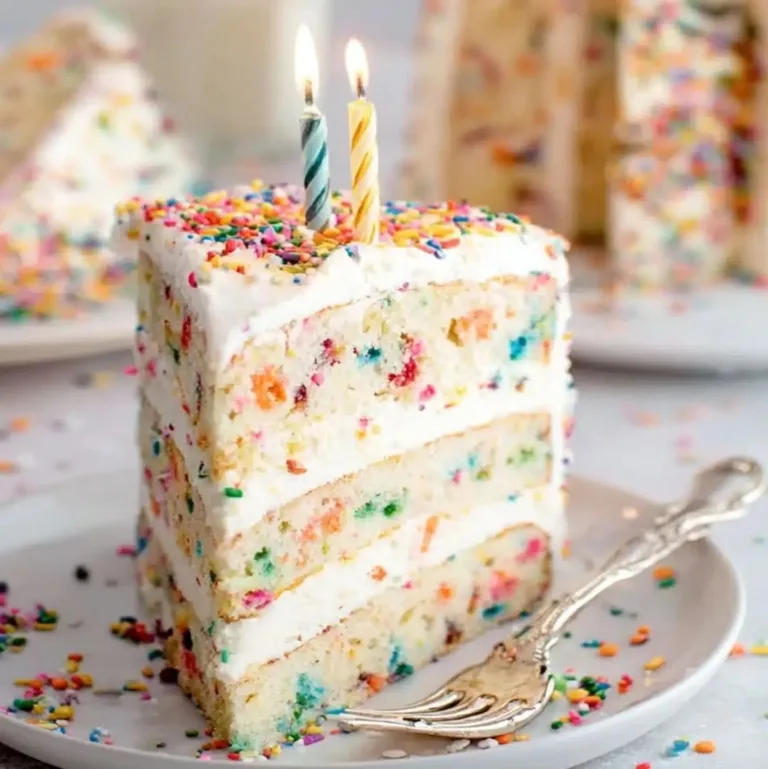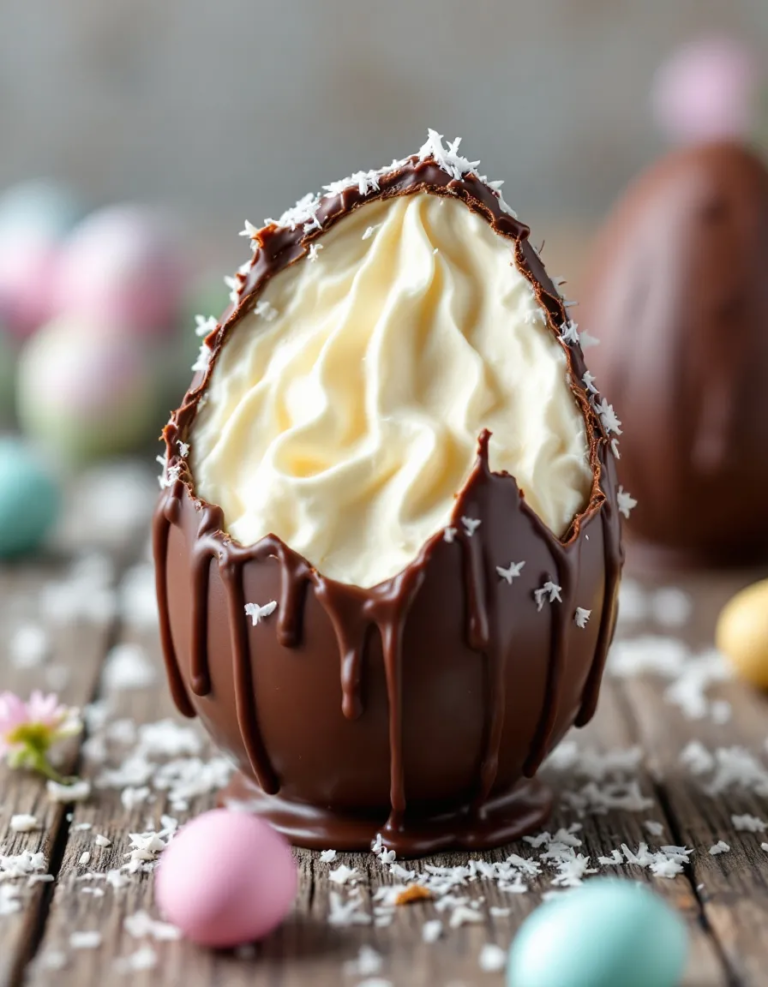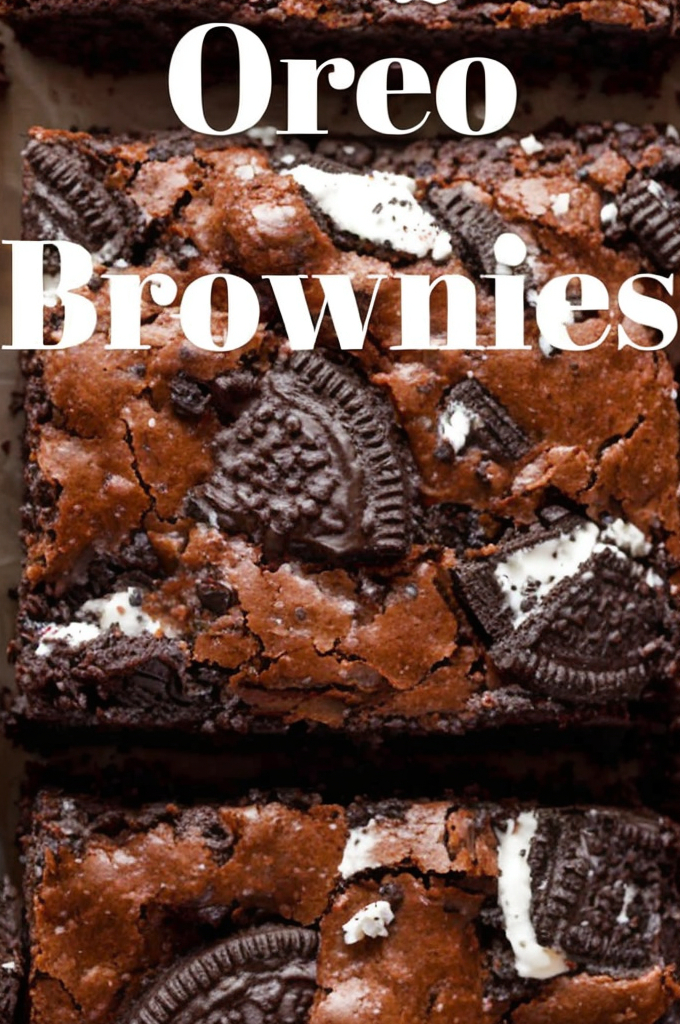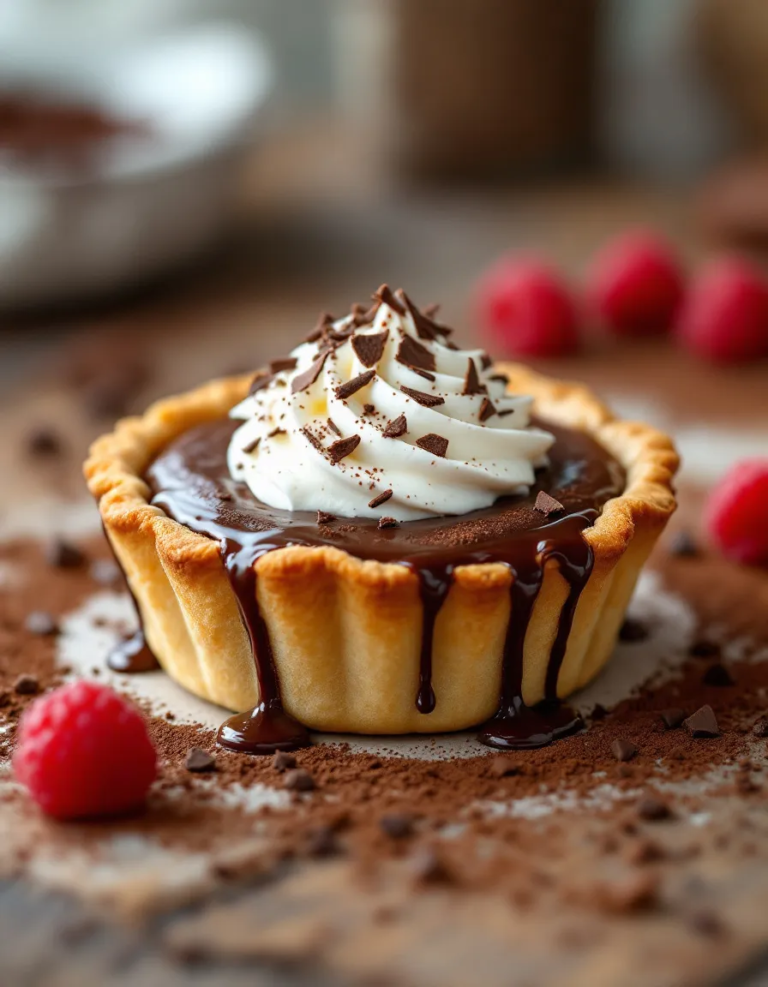Best Apple Scones with Maple Glaze – Ready in 30 Mins
Best Apple Scones with Maple Glaze – Elevate Your Tea Time
Imagine the tantalizing aroma of freshly baked apple scones wafting through your kitchen. Introducing our Best Apple Scones with Maple Glaze, a delectable treat that combines warm spices with the natural sweetness of apples, all topped with a luxurious maple glaze. Perfect for a cozy breakfast or afternoon snack, these scones are simple to prepare and guaranteed to impress with their rich flavors and tender crumb.
Apples are the star ingredient, bringing a moist texture and delightful burst of flavor to each bite. The subtle sweetness of maple glaze complements the scones beautifully, tying together the warm notes of cinnamon and nutmeg. In just 30 minutes, you can create a batch of these irresistible apple scones that are not only delicious but also visually stunning.
Quick Recipe Highlights
- Flavor Profile: The scones have a warm, comforting flavor, with hints of cinnamon and nutmeg enhancing the natural sweetness of the apples.
- Texture: Tender and slightly crumbly with juicy apple pieces, these scones promise a delightful mouthfeel.
- Aroma: Enjoy the enticing aroma of baked apples and spices, accented by the sugary, earthy scent of maple.
- Visual Appeal: Golden brown with a glossy glaze and speckles of apple throughout, these scones are a feast for the eyes.
- Skill Level Needed: Designed for the home baker, this recipe is easy enough for beginners yet rewarding for experts.
- Special Equipment: A pastry cutter for mixing butter, although a fork can suffice in a pinch.
Recipe Overview
- Difficulty Level: Easy and straightforward; a rewarding baking project that requires minimal technical knowledge, perfect for a cozy weekend bake.
- Category: These scones fit into the breakfast, brunch, or snack category, serving as a delightful complement to a hot cup of tea or coffee.
- Cuisine: Drawing inspiration from traditional British scones, these add an American twist with the use of maple glaze.
- Cost: Perfectly budget-friendly, utilizing pantry staples like flour and sugar, along with seasonal apples.
- Season: Made best in fall, leveraging the bounty of fresh apples, but enjoyable all year round with easily available ingredients.
- Occasion: Ideal for celebrations like Thanksgiving breakfast, or simply as a special weekend treat.
Why You’ll Love This Recipe
With each bite of these apple scones, you’ll experience the perfect blend of tender, moist crumb and the sweet, citrusy undertones of fresh apple pieces. The addition of a maple glaze elevates the flavor profile, turning a simple scone into an indulgent treat. This recipe delivers not just on taste but also on convenience; it comes together quickly with minimal mess, making it an ideal choice for those who wish to bake but are short on time.
The nutritional advantage of including real apples means each scone contains natural vitamins and antioxidants, providing a slightly healthier option compared to traditional pastries. Moreover, the scones are versatile and can be easily adapted to suit dietary preferences with slight ingredient modifications.
Socially, these scones are delightful conversation starters, perfect for brunch with friends or as a thoughtful homemade gift. Their comforting taste and charming presentation make them ideal companions for cozy gatherings, infusing warmth into any occasion. Economically, the homemade aspect keeps them far more affordable than bakery-bought options, without compromising on taste or quality.
Historical Background and Cultural Significance
Apple scones have their roots in British culinary traditions, where scones have been a staple in afternoon teas for centuries. Originating in Scotland, the evolution of scone recipes has seen numerous variations, with each region imparting its unique twist. The addition of apples and maple glaze adds a North American touch, reflecting the cultural crossover and adaptation of classic recipes.
Culturally, scones hold a significant place in British tradition, symbolizing a part of the quintessential afternoon tea. The modernization of recipes to include apples represents a shift towards integrating more local and seasonal ingredients into traditional baked goods, catering to changing tastes and preferences.
Regionally, apple scones have variations with different types of apples or additional ingredients like nuts or raisins, showcasing the adaptability of the recipe. While the essence remains the same, slight tweaks can offer a fresh take, making them widely celebrated across the globe.
Ingredient Deep Dive
Apples: Long revered as a symbol of health and abundance, apples bring natural sweetness and moisture to our scones. Their crunchy texture and tart flavor create a complex taste profile. Nutritionally, apples are rich in fiber and vitamin C, making them a beneficial addition to baked goods. Choose firm and crisp apples, such as Granny Smith or Honeycrisp, for the best results.
Maple Syrup: With a rich history rooted in North American culinary traditions, maple syrup serves as the perfect sweetener for the glaze. Its complex flavor adds depth and a luxurious touch to the scones. Ahigh source of minerals like manganese and zinc, maple syrup is more than just a sweetener—it’s a nutrient powerhouse. Ensure the syrup is pure and not artificially flavored for the best results.
Common Mistakes to Avoid
- Overmixing the dough can lead to tough and dense scones. Mix just until the ingredients are combined.
- Using warm butter instead of cold can prevent the scones from achieving the desired flaky texture.
- Skipping the resting time after forming the dough might result in flat, misshapen scones.
- Incorrect oven temperature can cause uneven baking, so always preheat thoroughly.
- Improper measurement of flour, leading to either dry or too sticky dough.
- Failing to mix the glaze until smooth results in inconsistent topping.
- Using overripe apples might alter the texture and moisture levels significantly.
- Not cooling the scones slightly before glazing could melt the glaze too much, making it run off.
Essential Techniques
Ensuring scones are flaky involves minimal mixing; stop as soon as the dough comes together. Keeping ingredients cold, especially butter, increases flakiness. Visually, the dough should have small visible chunks of butter. When cutting the scones, use a sharp cutter to ensure a clean edge—this will help the scones rise evenly.
Pro Tips for Perfect Apple Scones with Maple Glaze
– Use a pastry cutter or your fingertips to combine butter and flour without warming the butter.
– Opt for tart apple varieties, which hold their shape and flavor better after baking.
– Let the dough rest in the fridge for a few minutes before shaping; this helps the dough firm up and improves the texture.
– Brush the unbaked scones with a little milk or cream to enhance their golden color.
– Avoid over-glazing to maintain a balanced sweetness level.
Variations and Adaptations
To add a regional twist, incorporate local apple varieties or add spices unique to your locality. A seasonal adaptation could include using pears instead of apples in the autumn months for a fresh take. For dietary modifications, substitute all-purpose flour with a gluten-free blend and use a dairy-free butter alternative for vegan scones. Experiment with flavor variations by adding a sprinkle of nutmeg or cardamom for a spicy kick. For texture modifications, incorporate chopped nuts for a crunchier bite. Presentation alternatives involve drizzling the glaze decoratively or adding powdered sugar dusting.
Serving and Presentation Guide
For a perfect serving style, place the scones on a rustic wooden board or plate adorned with sprigs of rosemary or thyme for an earthy touch. Garnish with thin apple slices for added appeal. Traditional accompaniments include clotted cream or whipped butter. Serving warm is ideal, but ambient temperature is also pleasing, especially when paired with a hot beverage like chai tea. Portion control indicates offering one to two scones per person, as their richness is quite satisfying.
Wine and Beverage Pairing
Pair these apple scones with a crisp, slightly acidic wine like Riesling, which complements the sweetness without overpowering it. Non-alcoholic alternatives such as apple cider or chai tea provide a harmonious match. Temperature considerations suggest serving tea slightly cooled to avoid masking subtle scone flavors. For serving suggestions, prepare a tasting setup with small glasses or cups, allowing guests to choose their preferred pairing.
Storage and Shelf Life
Store scones in an airtight container at room temperature for up to two days. Refrigeration is not recommended as it may alter the scones’ texture. For freezing, wrap each scone in plastic wrap, then store in a freezer bag for up to three months. Thaw at room temperature and reheat in the oven for a few minutes. Look out for signs of spoilage such as staleness or off-odors.
Make Ahead Strategies
Prepare dough in advance and shape into individual scones before freezing. Freeze unbaked scones, allowing for baking straight from frozen without thawing. The dough benefits from resting, improving texture post-bake. Reheat gently to maintain freshness, and consider preparing extra glaze for freshness revival upon serving.
Scaling Instructions
When halving the recipe, carefully divide each ingredient by two and consider using smaller baking tools. Doubling or tripling may require larger mixing bowls and baking sheets, and possibly extended cooking times. Monitor closely to prevent burning. Proper storage is key for larger batches, ensuring freshness over extended periods.
Nutritional Deep Dive
Our apple scones offer a comforting treat while providing fiber and vitamin C from apples. With balanced macronutrients and a modest sugar amount, they fit well within a variety of diets. Portion control helps align with weight management, and thoughtful ingredient choices maximize nutritional benefits.
Dietary Adaptations
For gluten-free options, use a suitable flour blend that retains a light texture. Dairy-free adaptations are achievable with plant-based butter substitutes. For vegan versions, replace milk with almond or soy milk. Consider low-carb flour alternatives like almond flour for keto preferences. Check the suitability of chosen vegan butters to maintain the recipe’s intended flavor profile.
The Recipe
Best Apple Scones with Maple Glaze
Serves: 8 scones
Prep Time: 10 mins
Cook Time: 20 mins
Total Time: 30 mins
Kitchen Equipment Needed
- Pastry cutter or forks
- Baking sheet
- Parchment paper
- Mixing bowls
- Measuring cups and spoons
- Cooling rack
Ingredients
- 2 cups all-purpose flour
- 1/4 cup sugar
- 1 tablespoon baking powder
- 1/2 teaspoon salt
- 1/2 teaspoon cinnamon
- 1/4 teaspoon nutmeg
- 1/2 cup cold unsalted butter, diced
- 1/2 cup buttermilk
- 1 egg
- 1 teaspoon vanilla extract
- 1 to 1 1/2 cups chopped apples (about 1 medium apple)
- 1 cup powdered sugar
- Maple syrup (about 2-3 tablespoons, adjust for consistency)
Directions
- Preheat your oven to 375°F (190°C) and line a baking sheet with parchment paper.
- In a large bowl, mix flour, sugar, baking powder, salt, cinnamon, and nutmeg. Cut in butter using a pastry cutter or forks until the mixture resembles coarse crumbs.
- In another bowl, beat the egg and buttermilk, then add vanilla extract. Stir into dry ingredients until just combined.
- Fold in chopped apples gently. Transfer dough onto a floured surface and shape into a 1-inch thick circle. Cut into 8 wedges.
- Arrange scones on the baking sheet and bake for 18-20 minutes or until golden brown.
- While baking, stir together powdered sugar and maple syrup until a smooth glaze forms.
- Let scones cool slightly on a rack before drizzling with glaze. Serve warm or at room temperature.
Recipe Notes
- You can substitute buttermilk with a mix of milk and lemon juice or vinegar for a similar result.
- Feel free to add a handful of chopped nuts for extra texture.
- Store cooled scones in an airtight container to maintain freshness.
Troubleshooting Guide
To address texture issues, ensure the proper mixing and incorporation of butter into the flour. If experiencing flavor balance challenges, adjust the sugar or spice levels according to personal preference. Temperature problems can be resolved by verifying the oven’s accuracy; consider an oven thermometer. For equipment challenges, use common kitchen objects when tools are unavailable. Adjust ingredient substitutions in line with this guide, considering similar moisture and flavor profiles. If timing concerns arise, use visual cues such as the scones’ color and aroma to judge completion.
Recipe Success Stories
The community has shared glowing feedback on these apple scones, with variations including different glazes like caramel or lemon. Many have reported success in making them gluten-free without compromising taste. Adaptations such as adding raisins or cranberries have become popular, adding a new layer of flavor. Photography tips include capturing the glaze’s shine in natural light to enhance the scones’ visual appeal.
Frequently Asked Questions
Can I make these scones without buttermilk?
Yes, you can easily substitute buttermilk with regular milk mixed with a teaspoon of lemon juice or vinegar for a tangy undertone.
What’s the best type of apple to use?
Opt for firm and crisp varieties like Granny Smith or Honeycrisp, which hold their shape and flavor well when baked.
Can these scones be frozen?
Absolutely, both baked and unbaked scones freeze beautifully. Bake unbaked ones straight from the freezer, adding extra baking time.
How do I ensure my scones aren’t dense?
Light handling of the dough and ensuring your butter is cold will result in fluffy, well-risen scones.
Is it possible to use gluten-free flour?
Substituting with a good quality gluten-free flour blend often yields great results, though texture may vary slightly.
Can the glaze be made ahead?
The glaze can indeed be prepared ahead of time. Store it in an airtight container and whisk before use to ensure smoothness.
Do I need any special equipment?
Beyond standard kitchen tools, a pastry cutter can be useful for incorporating butter into the flour efficiently.
What if I don’t have maple syrup?
Honey or agave syrup can serve as substitutes, imparting a slightly different flavor but maintaining sweetness.
How should these scones be stored?
To maintain their freshness, store scones in an airtight container at room temperature for up to two days.
What drinks pair well with these scones?
These scones pair excellently with chai tea, coffee, or a crisp white wine, each enhancing apple’s subtle flavors.
Additional Resources
Explore more autumn-inspired recipes on our site for apple-packed delights or discover our technique guides for perfect baking. Gain insights on selecting the best apples or find recommendations for baking accessories that elevate your homemade treats. Take advantage of our seasonal variation tips to try unique flavors of familiar recipes.
Join the Conversation
Share your own apple scone creations with us on Instagram using #AppleSconeLove for a chance to be featured. Explore photography tips to capture these beauties in the best light, or leave a recipe review to share your thoughts with our community. Engage with fellow bakers to discover unique adaptations or follow us for new and exciting recipe ideas continually.







